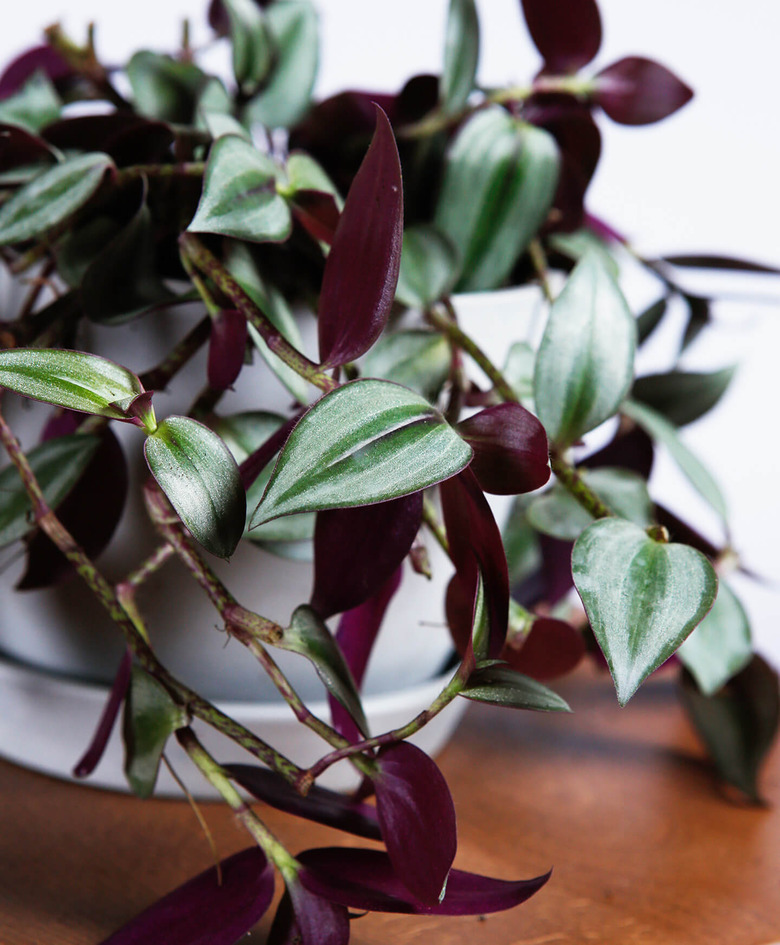Best Houseplant To Buy In June
We may receive a commission on purchases made from links.
During these warmer months, we are all about adding a low-maintenance houseplant that'll not only show off it's gorgeous greenery all summer long, it'll also continue to produce vivid new leaves for many seasons. The Tradescantia zebrina (also commonly known as the Wandering Jew plant or inch plant) is a stand-out choice for June with its brilliant foliage and easy-care ways.
About the Tradescantia Zebrina
About the Tradescantia Zebrina
The Tradescantia zebrina is a member of the spiderwort clan, but don't let the clunky name put you off. Spiderworts are tough perennials dressed out in jewel-tone foliage. Some are better in the backyard garden but this plant is ideal for your home, adding a punch of color to any room. There are several species in the Tradescantia genus but we're crazy about the incredible hues of zebrina.
The slender, graceful foliage is a eye-popping mix of royal purple, silver, and shades of green, from gray-green to emerald. No two plants have identical variegation, as if nature were an enthusiastic artist trying out different coloration patterns. The plants work especially well in hanging baskets where their fast-growing foliage overlaps the pot to trail gracefully over the sides.
Where to Find
Where to Find
These days, many of us are trying to support neighborhood stores by buying locally, so start looking for this houseplant in a nearby garden centers. If you strike out, move to bigger stores like the garden department at Lowes or check out Home Depot's selection.
However, if you prefer to shop online, we like the one offered by Bloomscape that arrives in a lovely pot. Etsy also lists a range of Tradescantia zebrina plants, from tiny cuttings to good size houseplants.
Caring Tips
Caring Tips
Tradescantia zebrina houseplants can take a lot of neglect and still continue producing vivid foliage. But it'll do best with some maintenance. Let's start with exposure: these plants prefer bright, indirect light. They'll accept a little direct sun as long as it's not during the heat of the day. Excess sun causes those gorgeous leaves to wilt.
The only tricky part is getting the water right. They love moist soil, but soggy soil will damage and perhaps kill them. To get the right amount of moisture, use well-drained potting soil (blend in some sand if needed), and water well but infrequently. Once a week is plenty in the summer, but cut this back in other seasons. Fertilizer is not necessary, so don't bother.
What about pruning? Pinching back the branches keeps the plant looking its best. Or if you want a few more specimens, snip off an inch of stem and tuck it into soil as a cutting. These plants propagate so easily that they are considered invasive outdoors.
